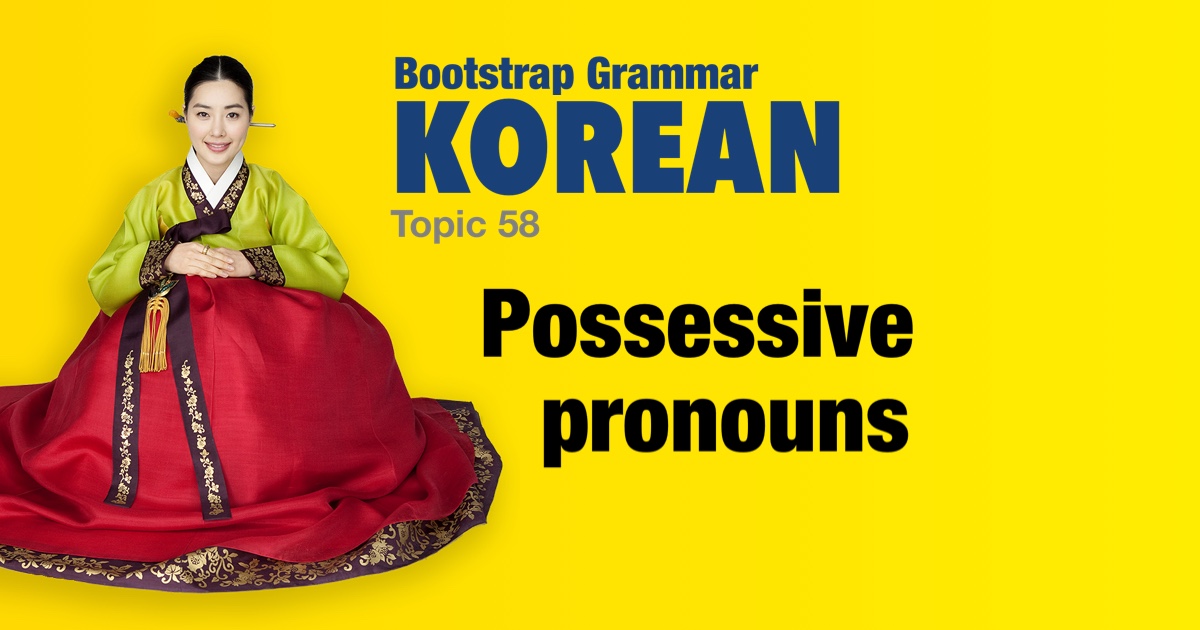Korean grammar - Possessive pronouns |
|||
|
|||
The Korean possessive pronouns are formed by attaching the possessive marker 의 to the pronouns. Because of the contagious vowels there is merging and abbreviation as follows: • 저의 ⇒ 제 (vowels merge) • 저희 + 의 ⇒ 저희 (typically drop the 의) • 우리 + 의 ⇒ 우리 (typically drop the 의) The phrase A + 의 것이에요 is a very common way to say that something belongs to someone - literally '...is A's thing.' -- And in informal spoken Korean the 것 is typically abbreviated to 꺼 - this makes pronunciation much easier. |
| Examples: | |
|
이것은 우리 어머니의 빨간 가방이에요.
This is our mother’s red bag.
|
|
|
제 친구는 호주에 살아요.
My friend lives in Australia.
|
|
|
저희 집은 넓어요.
Our house is spacious.
|
|
|
우리 엄마는 직장에 있어요.
My mother is at her job.
|
|
|
제 이름은 미나예요.
My name is Mina.
|
|
|
그는 그녀의 자전거를 좋아해요.
He likes her bike.
|
|
|
그의 어머니는 친절해요.
His mother is kind.
|
|
|
그들의 고양이는 귀여워요.
Their cats are cute.
|
|
|
저희 자동차는 까만색이에요.
Our car is black.
|
|
|
당신의 전공은 영어예요.
Your major is English.
|
|
|
제 일은 즐거워요.
(I) enjoy my job.
|
|
|
저 집이 우리 집이에요?
Is that house our house?
|
|
|
이것은 누구의 것이에요?
Whose is this?
|
|
|
누구 꺼예요?
Whose is (this)?
|
|
|
이것은 누구의 책이에요?
Whose book is this? |
|
|
저 차는 제 것이에요.
That car (over there) is mine.
|
|
|
그 자전거는 제 꺼예요.
That bike (there) is mine.
|
|
|
이 사람의 이름은 무엇이에요?
What is this person's name? |
|
 |
|



 Literally 'our mother' but commonly means 'my mother'.
Literally 'our mother' but commonly means 'my mother'.